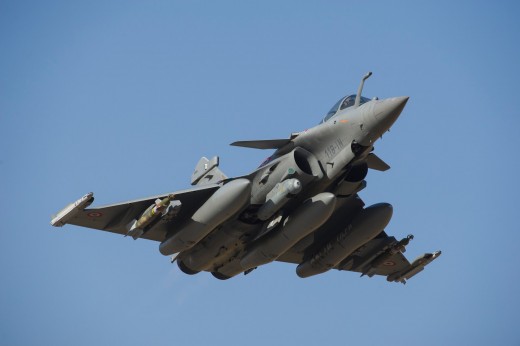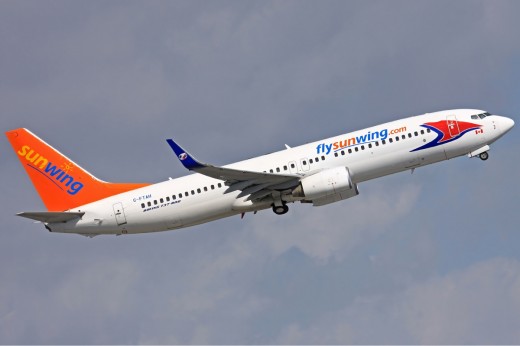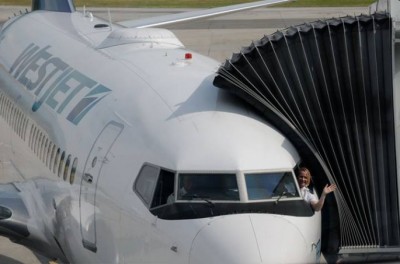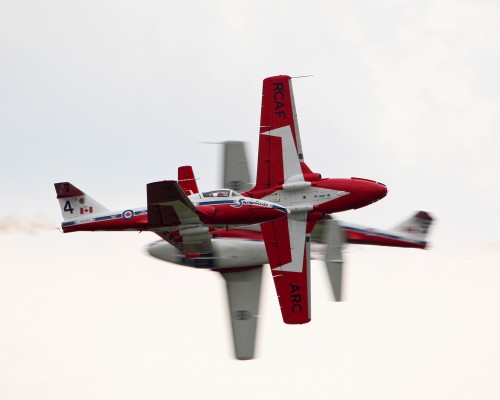Canadian Aviator Weekly Newsletter
![]() Each week we send out an informative newsletter which summarizes the past week’s Canadian Aviation happenings.
Each week we send out an informative newsletter which summarizes the past week’s Canadian Aviation happenings.
To Visit Our Signup Page
JUST CLICK HERE
………………………………………………………
First Canadian IMC Club in Calgary

Pilot’s group that promotes IFR currency and proficiency and general flying excellence will open its first chapter in Canada May 7 and the founder is hoping there will be more.
The IMC Club began just three years ago in the U.S. but has spread to dozens of airport communities and 2,000 pilots south of the border as well as South America, Europe and Africa. Calgary’s Springbank Airport will host the first Canadian chapter.
“I am very happy that we have the opportunity to grow and expand our general aviation Instrument Aviation Safety mission. I want to thank Steve Peach, our first chapter leader in Canada for allowing us this opportunity. It is going to be a privilege for me to meet with our pilot friends in Calgary,” said Radek Wyrzykowski, the president of the IMC Club. Wyrzykowski will be at the May 7 meeting.
IMC Club meetings are described as “organized hangar flying” bringing together pilots who regularly fly in instrument meteorological conditions.
SkyRider Canadian Distributor Announced
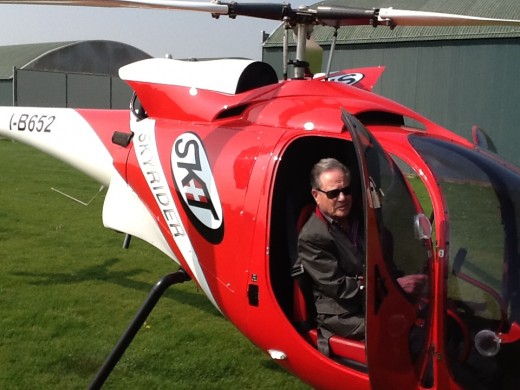
An Ontario insurance broker is the Canadian, U.S. and Indian distributor for SkyRider, a new two-place helicopter designed in Italy.
Bill Davidson says the aircraft is destined to “take over the training for helicopters,” because of its low maintenance design, docile flight characteristics and spirited performance.
“If a Ferrari could fly it would look like the SkyRider. [It’s an] amazing machine,” Davidson told Canadian Aviator.
Among the design features is a mechanical clutch that replaces the troublesome belts common on small piston helicopters. It also features FADEC on the 155 horsepower engine which burns five gallons of auto fuel an hour.
It has a cruise speed of 100 mph and a range of 650 miles.
More announcements on the helicopter business will be forthcoming.
Drone Videographer Criticizes Critics

The owner of the YouTube channel that features a controversial video of an airliner on approach to Vancouver International Airport has criticized public and media response to his video, saying there was never any danger to anyone.
Quadrotor Dragonfly said in a message on his channel that the video was shot from more than a kilometre away from the approach at a height of 120 metres and an editing technique called software zoom created the impression that it was closer.
The hobby aircraft was nowhere near the airplane filmed, contrary to media reports,” the person behind the YouTube name wrote. “In hindsight, admittedly, it was a mistake to take such a video and post on YouTube.”
Transport Canada and the RCMP are still looking for the anonymous videographer but there’s no indication he or she intends to cooperate with their investigation.
He criticized the “sensational account” published by some in the media and also criticized the Model Aeronautics Association of Canada for politicizing the video rather than working to “promote the hobby and the democratization of the technology.”
Suit Launched in Hang Gliding Death

Three groups representing hang glider and paraglider pilots in British Columbia and across the country have been named in a lawsuit resulting from the death of young woman who fell from a tandem hang glider two years ago.
The parents of Lenami Godinez Avila have file a broadly based suit seeking damages on behalf of their daughter and for the suffering they experienced when she dropped 300 metres from the aircraft after it launched from a mountain near Agassiz, B.C., about 100 km. east of Vancouver.
Avila was on her first flight, an relationship anniversary gift from her boyfriend, with Jon Orders, an experienced hang gliding instructor. Orders didn’t attach Avila’s harness to the hang glider and she slipped off his back shortly after launch. Orders has since been sentenced to five months in jail for criminal negligence causing death. After landing the hang glider, Orders swallowed a video card from an onboard camera that recorded the flight but charges of obstruction of justice were dropped after he pleaded guilty to the criminal negligence charge.
The card was recovered several days later and the video, which was shown in his court case, showed him trying to clip her harness to the aircraft after launch.
The suit also names Orders’ partner in the business, Shaun Wallace, along with the Hang Gliding and Paragliding Association of Canada, the British Columbia hang Gliding and Paragliding Association and the West Coast Soaring Club. Avila’s parents allege the groups didn’t ensure proper training and standards for commercial operators and didn’t warn the public of the hazards of the activities.
“The defendants … knew or ought to have known of the reasonable possibility of causing severe physical harm to persons such as Lenami Godinez by their actions and/or inactions. This demonstrated a callous disregard for public safety,” the lawsuit says.
Orders has quit flying and has publicly apologized several times for his role in the accident.
Feds Looking for Quick Helicopter Fix

After 20 years of attempting, by various means, to replace Canada’s Sea King helicopters, the federal government has embarked on a kind of speed date with those who might provide one.
The Canadian Press is reporting that senior representatives of the Department of National Defence and Public Works Canada gathered representatives from three helicopter companies and gave them three weeks to decide if they have an off-the-shelf solution to a much less rigorous set of requirements for an offshore helicopter.
Oddly enough, the meeting included Sikorsky, which has spent 10 years trying to provide the just-right version of its S-92 platform, which Canada will call the CH-148 Cyclone. That hasn’t gone well. An S-92 operated by Cougar Helicopters ditched in the Atlantic off Newfoundland due to a transmission failure from a loss of oil. After that, the federal insisted the aircraft it receives have a 30-minute “run-dry” capability.
So far, Sikorsky has delivered four Cyclones as a sort of test and they’re being evaluated and that’s not going well. Apparently the radar upsets other systems on the highly digital aircraft.
So, that brought the meeting last week in which representatives of Sikorsky, Agusta Westland, and NH Helicopters, representing Eurocopter, were handed a short list of basic requirements for a helicopter Canada desperately needs.
Sikorsky thinks it will still win but the government has made it clear it’s not wedded to the Cyclone contract which first came to light 20 years ago. In fact, the government has even asked Sikorsky if the MH-60 helicopter used by the U.S. Navy might do the job rather than the S-92.
McLeod Salvages Fourth in Rovinj
Canadian Red Bull Air Race competitor Pete McLeod says he was lucky to salvage a fourth place finish out of last weekend’s race in Rovinj, Croatia.
The London, Ont. native said clipping a pylon in the qualifying round should have kept him out of the running on Sunday but because four other racers had done the same before he did, he earned a back-door spot in the next round which then led to his Final Four appearance.
The finish, coming on the heels of his third-place finish in the first race of the season at Abu Dhabi, earned him five points and kept him in third place overall in the standings. Hannes Arch, of Austria, was first and Paul Bonhomme of the U.K. was second. Yoshihide Muroya, of Japan, got his first podium finish with a third place performance.
McLeod said he was suffering from a sinus problem heading into the race but said he also had trouble getting into the groove in Rovinj.
“I’m satisfied with the points – it’s more than I could have hoped for with my performance,” said McLeod on his Web site. “I just wasn’t feeling things [Sunday]. I was fighting the airplane, not feeling well, and it showed in the track. I was surprised by my first flight. I almost hit five pylons before I hit that one pylon. So it was a mess out there.”
McLeod will have a month to regroup before the race series heads to Kuala Lumpur, Malaysia May 17-18.
Garage Sale Ends Arctic Air
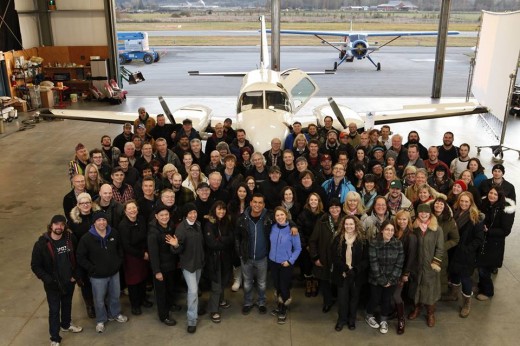
After three years in prime time, the CBC series Arctic Air ended its run with a season finale April 9 but fans had the chance to take home lasting memories of the show.
The show’s production company, Vancouver-based Omnifilm, held a giant garage sale in an elementary school in nearby Aldergrove selling everything from native clothing and art to mockups of a Cessna 152, Cessna 310 and a Bell 206 helicopter.
It takes a lot of gear to make an action adventure series like Arctic Air and the items on sale filled the school gymnasium.
Arctic Air was cancelled by the CBC on March 17, not long after the network lost Hockey Night in Canada to Shaw. The moneymaking hockey broadcasts subsidized much of the network’s original programming.
Arctic Air followed the exploits of a fictional airline based in Yellowknife and the perilous missions it undertook. The series starred Adam Beach and Pascale Hutton.
GAL Aerospace Acquires AeroQuest
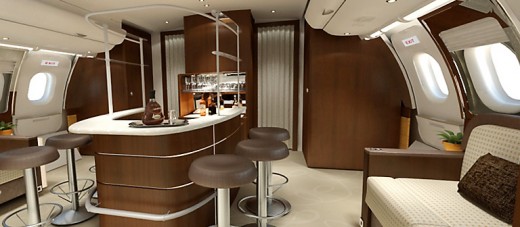
Canada’s leadership in the aircraft completion industry was enhanced last week with the acquisition of AeroQuest Inc., of Lawrenceville, Georgia, by GAL Aerospace, of Montreal.
GAL is a world-renowned producer of aircraft interior cabinetry and AeroQuest has been making aircraft showers, countertops, window shades and other components for more than 30 years. The combination of expertise and products will enhance GAL’s ability to serve its diverse customer base.
[AeroQuest’s] products and capabilities add tremendously to our existing offering and we are excited to represent a broader product offering to an expanding base of OEMs, Tier 1 suppliers, completion centers and MROs,” said GAL CEO Glen Lynch.
AeroQuest will remain a standalone company in Georgia under the direction of founder Steve Waters.
Dassault Pledges $9 Billion in Rafale Work
Dassault Pledges $9 Billion in Rafale Work
Dassault has upped the ante in its upstart bid to supply the RCAF’s new fighter aircraft.
In an interview with the CBC in Montreal on Tuesday, Dassault Vice President Yves Robins said the French company will guarantee that $9 billion worth of contracts will be handed to Canadian companies if Canada chooses its Rafale fighter to replace the worn-out CF-18s that are now the country’s flrst line of defence.
Robins said the contract will also include technology transfer and maybe the opportunity to do final assembly of the aircraft in Canada.
“Should the Canadian industry wish to assemble or produce part of the Rafale in Canada, we are fully open to it,” Robins told CBC. “This is a commitment. A contractual commitment, even with penalties written in the contracts. We are not saying the Canadian industry could potentially, maybe go up to $10 (billion) or $11 billion by bidding for such-and-such contracts. We are saying we guarantee this return to the Canadian industry. It’s a totally different philosophy from some of our competitors.”
The financial commitment is seen as an aggressive game of one-upmanship aimed at a perceived weakness in Lockheed Martin’s proposal which would give Canadian companies the opportunity to bid for up to $11 billion in work against those from other countries who are partners in the F-35 Joint Strike Fighter program. More than 30 Canadian companies are already working on parts of the F-35 under contracts worth $600 million but Lockheed Martin Vice President Steve O’Bryan told Canadian Aviator earlier this month that if Canada cancels its involvement in the program Canadian companies will be shut out of further bidding.
“We will honour the existing contracts,” he said.
Canada was one of the JSF partners until last year when the federal government called for a review of its involvement when questions about the total cost and the methods of estimating those costs were raised. The procurement was taken away from the Department of National Defense and handed to Industry Canada which has since finished its report into those questions and presented it to the government.
The choice in front of the politicians is whether to rejoin the F-35 program or launch a competitive bidding process which will allow other fighter jet manufacturers, including Dassault, to try to win the contract. Others in the running would be Boeing, with its upgraded version of the CF-18, the FA-18 Super Hornet and the Eurofighter.
The government hasn’t given any indication on when it might decide the fate of the fighter contract process but it has been sending signals of late that the economic factors are getting increasing weight.
Summit Introduces Avro RJ85 To North
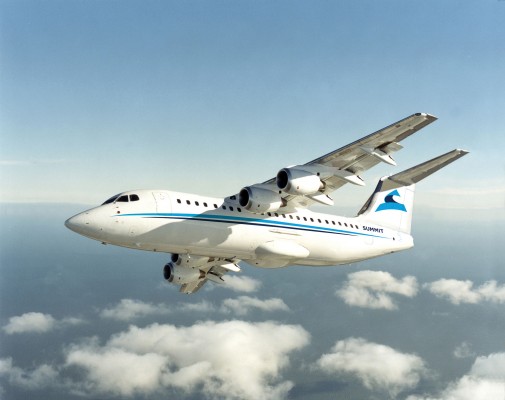
Summit Aviation Group will use an Avro RJ85 to fly staff of the Diavik Diamond Mine between Edmonton and the mine starting later this year. The company is supplying the aircraft in a partnership with Dene-owned Det’on Cho Logistics and First Air.
Summit President Rob Mauracher said the four-engine airliner will carry almost 90 passengers into the 5,234-foot gravel runway at Diavik’s private airport near the mine. The mine is located about 500 km. northeast of Yellowknife. More than half of its workers live in the south and rotate in and out.
“The introduction of the Avro RJ85 to Summit’s fleet is a significant change in our business model,” says Summit’s president, Rob Mauracher. “Being able to move upwards of 90 passengers to and from remote locations significantly broadens our service offering, while still providing the northern expertise in safety and reliability Summit is known for.”
The RJ85’s high-wing design gets the engines up and out of the way of gravel kicked up by the tires and a gravel kit that protects the underside of the aircraft permits operation into unimproved runways like that at Diavik.
The RJ85 is a modernized version of the BAE 146 airliner that was operated by Air B.C. in the 1990s.
Air Canada Stops Caracas Flights
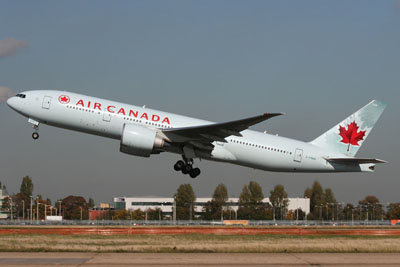
Air Canada has suspended its thrice-weekly flights between Toronto and Caracas, Venezuela citing the civil unrest that is gripping the South American country.
“Due to ongoing civil unrest in Venezuela, Air Canada can no longer ensure the safety of its operation and has suspended flights to Caracas until further notice,” the airline said in a statement on its website.
“Air Canada will continue to monitor the situation and will evaluate the reintroduction of flights with the objective of resuming operations on the route once Air Canada is satisfied that the situation in Venezuela has stabilized.”
A Tuesday flight to Caracas was cancelled, as was the return on Wednesday.
However, the government of Venezuela has other ideas about the resumption of service. President Nicolas Maduro has warned airlines that any airline that pulls out of the country will not be allowed back under his rule.
Sunwing 737 Hits Severe Turbulence
- A Sunwing 737 hit severe turbulence over Montana early Sunday
Two Sunwing flight attendants were slightly injured and 181 passengers significantly inconvenienced when the Boeing 737 hit “extreme turbulence” east of the Rockies and made an emergency landing in Helena, Montana.
The flight was on its way from Edmonton to Puerto Vallarta with the passengers and six crew when it it the rough air. The flight crew headed for Helena after the two flight attendants suffered minor cuts and the aircraft landed about 7:30 a.m.
Helena, which is the capital of Montana, does not normally get international arrivals and the passengers had to sit on the plane for five hours before U.S. Customs officials could be found in Great Falls, 90 minutes away, to allow them into the small terminal, where they were kept in a cordoned off area.
The turbulence was bad enough that Sunwing needs to inspect the aircraft before it carries passengers so the airline had to round up another aircraft. It didn’t get to Helena until early evening and it was 6:25 p.m. before the vacationers were on their way.
The flight attendants were both cleared to continue the flight. The turbulence hit during Sunwing’s champagne service, which ended up on, rather than in, the passengers.
USAF General Fuels F-35 Debate
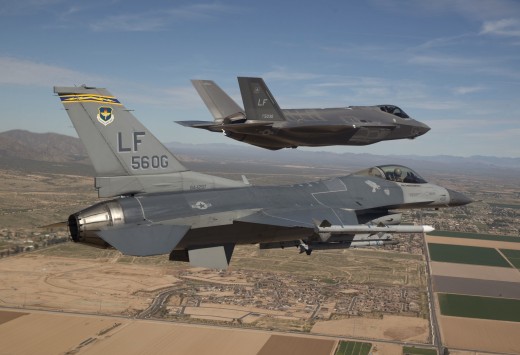
A top U.S. Air Force general says he will “fight to the death” to ensure the U.S. Air Force buys enough F-35 fighters but at the same time Gen. Michael Hostage appeared to cast doubt on the effectiveness of the Joint Strike Fighter.
His controversial comments came as Canada’s federal government appears poised to decide the F-35’s fate as Canada’s next front-line fighter.
.In an interview published in February by Air Force Times, Gen. Michael Hostage, the commander of USAF’s Air Combat Command in charge of the Air Force’s fighter fleet, called the F-35 “irrelevant” without the support of F-22 Raptors.
“If I do not keep that F-22 fleet viable, the F-35 fleet frankly will be irrelevant. The F-35 is not built as an air superiority platform,” he told the Times. “It needs the F-22. Because I got such a pitifully tiny fleet, I’ve got to ensure I will have every single one of those F-22s as capable as it possibly can be.”
The comment was seized upon by Canadian media as the federal government considers an internal report on whether to continue as a sole source partner in the JSF program or to allow open competition for the next Canadian fighter. The fundamental difference is that the F-35 is the only so-called fifth generation fighter (with advanced sensors and stealth technology) in the battle and the FA-18, Typhoon and Rafale are considered fourth generation fighters.
But while Hostage seems to suggest the F-35 is the F-22’s weak sister, he also said the F-35 is an absolute requirement for USAF to meet a coming threat from “adversaries” who are developing fifth generation jets of their own.
“I am going to fight to the death to protect the F-35 because I truly believe the only way we will make it through the next decade is with a sufficient fleet of F-35s, he said. “If you gave me all the money I needed to refurbish the F-15 and the F-16 fleets, they would still become tactically obsolete by the middle of the next decade. Our adversaries are building fleets that will overmatch our legacy fleet, no matter what I do, by the middle of the next decade.”
Lockheed Martin, which built the F-22 (production ended at 168 aircraft) and is now building the F-35. hosted Canadian media, including Canadian Aviator Editor Russ Niles, at a day-long briefing on the aircraft and the Canadian involvement in early March and defended its ability as a fighter.
It was noted that the F-35 has won all 13 fighter competitions it has entered in the last couple of years. Although its flight performance envelope is similar to all other modern fighters, the Lockheed officials stressed the fifth generation electronics and stealth as its big advantages, suggesting it could destroy its adversaries long before they see the F-35.
At the Canadian media briefing (three reporters, including Canadian Aviator attended) Lockheed Martin officials said the F-35 builds on the technology developed for the F-22. But while the U.S. government is encouraging Lockheed Martin to sell the F-35 to virtually any country that is friendly to its interests, it refuses to allow the sale of the F-22 to anyone.
An airplane that was on display for the Canadian journalists at the Fort Worth plant was the first of a new squadron of F-35s to be delivered to Luke Air Force Base in Arizona earlier this week. Luke, which is now an F-16 base, will eventually have 144 of the F-35s.
Twin Otter Hunts Missing Airliner
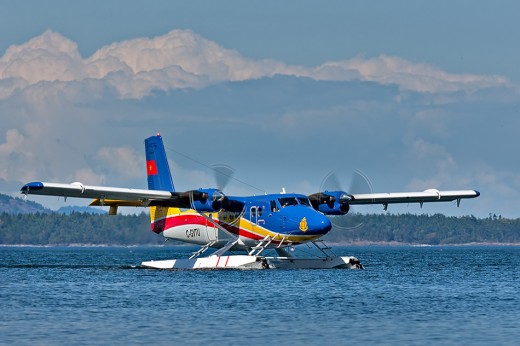
It didn’t take long for the Vietnam Navy’s first Series 400 Twin Otter to see some high profile action.
The amphibious version of the new-build Twin Otter was among the first aircraft to search for Malaysian Airlines Flight 370, which was presumed to have been lost off Vietnam’s southwest coast early in the ongoing drama.
The amphib aircraft, which was built by Viking Aircraft of Victoria, was delivered in December. The crew flying the search missions were trained in Vancouver by Viking’s training affiliate Pacific Sky.
The crew aboard the navy’s Twin Otter took the photos of what were assumed to be crash wreckage in the area where contact was lost with the Boeing 777.
Viking said the aircraft “was selected by the Vietnam Navy for its ability to perform a multitude of roles, including maritime search and rescue,” Viking said in a news release.
Meanwhile Viking is celebrating completion of its 50th aircraft. Ironically, the aircraft is going to MASwings, a subsidiary of Malaysian Airlines. MASwings has ordered six of the aircraft.
TC Approves Blackshape AULA
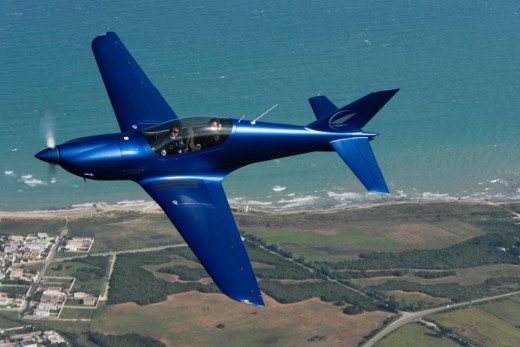
An Italian design that pushes the envelope for tiny airplanes has been approved by Transport Canada in the advanced ultralight category.
Aircite Aviation-Aviasport, based at the increasingly active Lachute Airport in Quebec, has been appointed the dealer for the Blackshape Prime, a slippery composite design that does the maximum that the restrictive AULA regs allow. With a 100 horsepower Rotax 912, it will go 1,000 miles on a tank of gas on economy cruise (120 knots) and 650 miles at 150 knots. Maximum speed is about 200 knots.
The aircraft is actually more than 200 pounds lighter than the AULA maximum and has a tandem configuration. Plans are in the works for a heavier version with a 115 horsepower engine to take advantage of the weight cushion both here and under U.S. Light Sport regs.
It comes with a variable pitch propeller, autopilot, parachute and glass panel and it costs $269,000.
Bombardier Freezes Wages
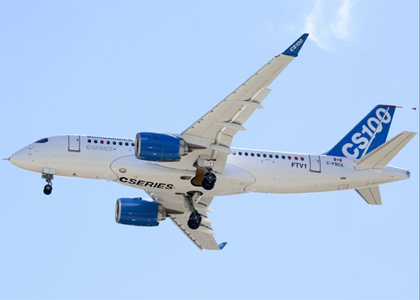
Bombardier has frozen the wages of about half of its employees, clapped limits on travel and instituted various measures to conserve cash as the delays of a couple of high-profile development projects threaten to eat into its bottom line.
In an effort to insulate investors from the cost of years of delays in the CSeries and Learjet 85 programs, the company is doing everything it can to cut costs in the aerospace division. More than 38,000 employees, including those in the executive suite, are affected. The rest of its 76,400 employees are covered by contracts of one sort or another that dictate their pay.
“Meeting our profitability goals is a priority,” Bombardier spokeswoman Isabelle Rondeau said in an interview with the Bloomberg . “We’ve reached many milestones in the development of our new products, we have a substantial backlog, but now we have to deliver on our profit targets. That’s the context for these measures.”
The CSeries has missed several important deadlines and Bombardier has now stopped making promises other than that the aircraft will be a major leap in passenger/mile efficiency whenever it’s ready. The delays have pushed development costs up by more than $1 billion $4.4 billion (USD) and has enough orders (201) and options (another 200) to be profitable.
The Learjet 85 has been approved for its first test flight but, as far as can be determined, hasn’t flown yet. Both are composite aircraft and share some of the software and avionics issues that have dogged most such technological leaps.
Canadian Women Celebrate Flight
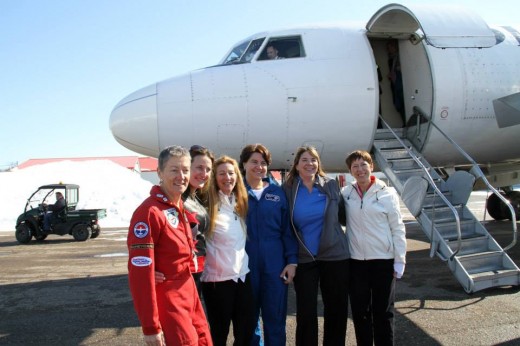
At events all over the country last week, Canadian women aviators encouraged other women to consider aviation as a pastime or vocation.
It was Women of Aviation Worldwide Week, founded and led by Canadian Aviator columnist Mireille Goyer and the Canadian events, from B.C. to Quebec, were among celebrations and networking sessions held all over the world.
Mirabel and Lachute Airports in Quebec hosted events which included participation by Carole Pilon, Bombardier’s only female test pilot (for 13 years), Carol Pilon, a Gatineau wingwalker and Carol Ann Garrat, who has flown around the world three times.
Mirabel has the unique distinction of being the only airport in the world to formally acknowledge the first licensed female aviator, Raymonde de la Roche with a sign on the airport.
WestJet Captain Responds to Sexism
WestJet Pilot Responds to Sexism
The well-chronicled story of the WestJet captain who was told by a passenger to metaphorically take command of a mini-van full of kids came at an ironic time for those who have mounted a global effort to encourage more women to fly.
It’s International Women of Aviation Week, which is led by Canadian Aviator columnist Mireille Goyer, and thousands of volunteers are battling weather and other challenges to give women and girls a chance to fly, mostly for the first time, in small aircraft to see if they like it and to show them how they, too, can do it.
For those who haven’t heard the story about WestJet Capt. Carey Steacy’s encounter with some blatant sexism last week, a note scratched on a napkin was left behind by a passenger who identified himself as “David” and told Steacy not only that she had no business a “the helm” of the 737 going from Calgary to Victoria but also suggested WestJet let passengers know about the gender arrangement in the front two seats so passengers like him can make male-only arrangements.
David, who started questioning flight attendants about Steacy’s suitability for the left seat as soon as he heard her first PA announcement. The note, which said “the cockpit of an airliner is no place for a woman” and that “being a mother is the most honor.”
WestJet said it wouldn’t dignify the note with a response but said it supported Steacy. Steacy posted the note on Facebook and outed her reluctant passenger.
True to the statistics, WestJet has 58 females among 1,158 pilots, slightly less than the six percent of pilots who are women based on the number of licences issued.
International Women of Aviation Worldwide activities began with a snowbound launch in Washington, D.C. and we’ll have further reports later this week.
Snowbirds Uncancel U.S. Shows
Some high-level intervention has ensured the Snowbirds will fly south this summer.
In a news release last week, the RCAF announced the schedules of both the Snowbirds and the CF-18 demo team and both include U.S. stops.
A few weeks ago, the RCAF announced it had scrapped four U.S. shows because budget cuts had reduced their flight hours and Canadian shows had to be the priority. Apparently the devastation of four U.S. air shows counting on the team as their main draw suddenly became a priority with someone who outranked whoever pulled the plug on those shows. Whether or not the flight hours were adjusted accordingly isn’t clear.
The team was originally scheduled for four U.S. shows but one of them, in Cape Girardeau, Missouri, has since been cancelled. Whether there will be a fourth U.S. show as originally scheduled is not clear but there have been suggestions on U.S. aviation web sites that a show in San Diego is a possibility.
In announcing the abrupt schedule change, Gen. Yves Blondin, who commands the RCAF, said the Air Force is part of the larger community of military forces. “The RCAF is committed to collaborating and cooperating with our international allies and partners.”
In that spirit, the CF-18 demo team is headed to Belgium and Switzerland for shows this summer along with a couple in the U.S.
Here are the Snowbirds and CF-18 schedules.


